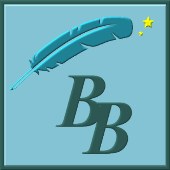This is the 11th of an 18 part series on How to be a DM. To start at the beginning, click here.

Result of Exploration
When the PCs explore their environment, there are natural consequences. At some point, they are spotted by that band or orcs or set off a trap under that tree. At this point, I add a visual element to the verbal descriptions.
Most of the time, the result is a combat encounter. In a combat encounter, the players fight with the bad guys in your adventure story. (Although sometimes it’s the good guys. Oops!)
In combat encounters, players will be taking turns with their opponents taking actions against each other. The first clue they have is usually when they hear me say “Roll for initiative!” Things start moving.
At that point, I add the visual element if it is not already down on the table. All scenes are either exterior or interior.
Show Terrain with Vinyl Mat
For exterior scenes, I like to use a transparent vinyl grid that I created. Underneath the grid, I tend to use either a tablecloth or poster board. This gives me a quick way to indicate the terrain. For example:
- A green tablecloth indicates grass
- A gray tablecloth is dirt
- Brown paper is swampy muck
- Blue posterboard or paper is water
This give a quick way to see the terrain without using a wet erase marker to draw the whole thing out. There is still a subtle grid to clarify movement and distances during combat. I sometimes cover over the terrain with a piece of neutral posterboard to hide the upcoming scene before it is revealed.
My goal is to slap that scene down as fast as possible while the players are looking at their notes to see what spells they have prepared. You want fast set changes, so flow is not interrupted. The players are starting to get excited now that combat is starting and you don’t want to slow that down.

Other Natural Elements
I then plop down trees or other items in the environment so they know definite areas they can hide or where danger may be lurking. Is there a kobold hiding behind that bush?
These other props may be store-bought or may be crafted out of aquarium plants or other supplies. I also extensively use items like Heroscape tiles or plants.
It’s important that nothing be so big that it obscures visibility. Generally the players should not have to keep standing up all the time to see what is happening.(Exceptions can apply if it is important to the plot or if it is that one big piece they encounter.)
Occasionally I will need to draw something on the grid with a wet erase marker, such as a tunnel they are traversing. But I usually try to avoid drawing with marker because of the mess.
So this approach works great for the outside, but what do you do when they walk inside? I’ll describe how I do interior scenes in the next story, when they wonder What’s that noise behind the door? .
Bitzy the Bard
“Life is an adventure story and you are the star. Choose to play a hero!”


